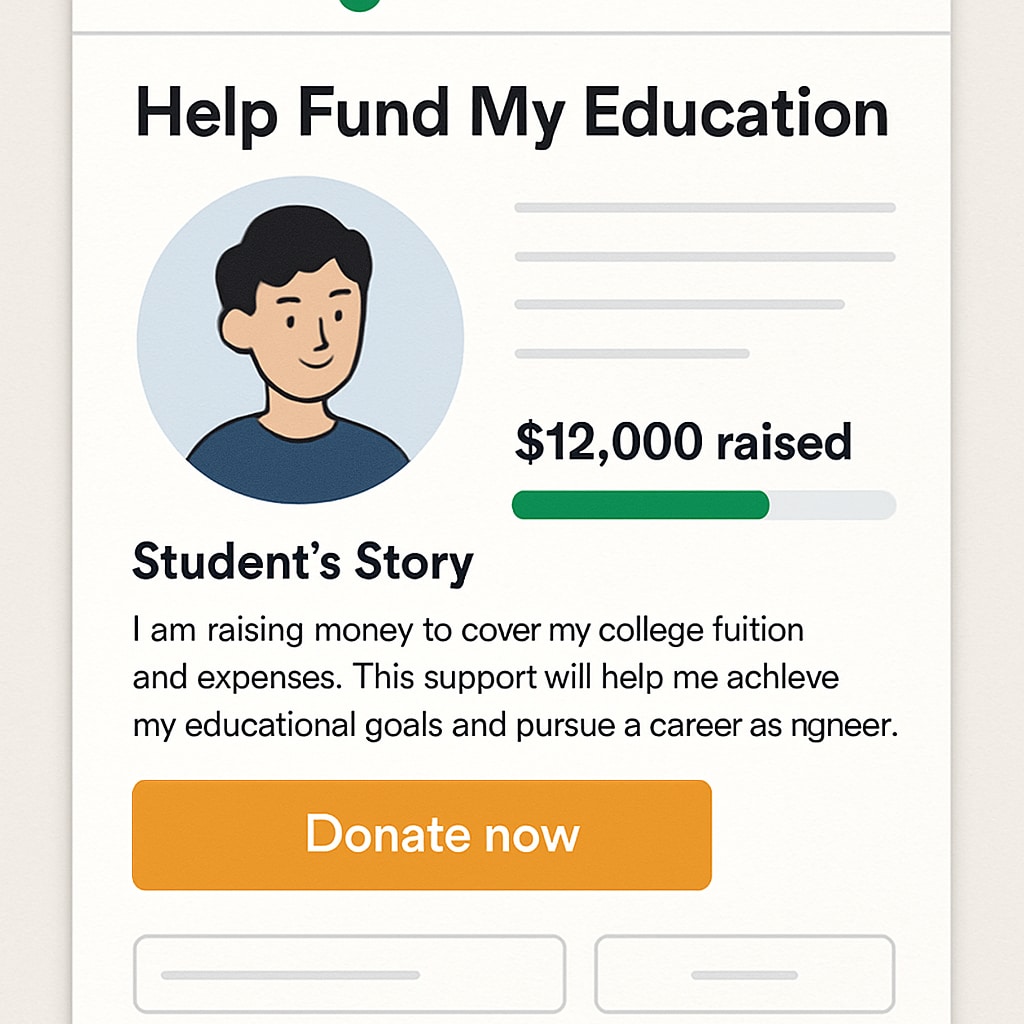For many students, the dream of attending college often collides with the harsh reality of tuition costs. One student has turned to GoFundMe to raise funds for their final semester of undergraduate studies and subsequent medical school applications. This story sheds light on the financial challenges that students face as they transition from the K12 education system to higher education, where financial aid often falls short of covering the total cost of attendance. This case brings into focus the wider issue of funding gaps in the U.S. education system and the long-term impact on students’ futures.
The Financial Gap: From K12 to Higher Education
The U.S. education system invests significant resources into K12 education, ensuring that students have access to free or low-cost schooling through high school. However, this financial support diminishes drastically when students enter college. Federal and state grants, scholarships, and loans are available, but they rarely cover the full cost of tuition, housing, and other expenses. According to the Encyclopedia Britannica, the cost of higher education in the U.S. has increased by over 25% in the last decade, making it increasingly difficult for students to afford a degree without taking on substantial debt.

For students like the one turning to GoFundMe, this gap can be the deciding factor between completing their education or dropping out entirely. Despite their academic achievements and potential, the lack of financial support can derail their aspirations, such as applying to medical school—a path already fraught with additional costs, including application fees, entrance exams, and interview travel expenses.
Why Crowdfunding? A Growing Trend Among Students
Crowdfunding platforms like GoFundMe have become a popular solution for students seeking to bridge the financial gap. These platforms allow individuals to share their stories and receive donations from a global audience. For many, it’s a last resort after exhausting all other financial aid options. However, relying on crowdfunding highlights systemic issues, as education should not depend on the generosity of strangers.
Some of the reasons students turn to crowdfunding include:
- Insufficient financial aid packages from universities.
- Unexpected personal or family financial hardships.
- The high cost of specialized programs, such as medical or law school.
According to Wikipedia, crowdfunding raised over $34 billion globally in 2022 alone, with education being one of the top causes. While this demonstrates public willingness to support students, it also underscores the inadequacies of existing financial aid systems.

Preparing Students in the K12 System
Addressing the funding gap requires rethinking how the K12 education system prepares students for the financial realities of higher education. Schools can play a proactive role by:
- Incorporating financial literacy courses into the curriculum, teaching students about budgeting, loans, and scholarships.
- Providing more comprehensive college counseling services that cover the financial aspects of college planning.
- Building partnerships with local organizations and businesses to offer scholarships or sponsorships for graduating seniors.
In addition, policymakers must work to expand financial aid programs, reduce tuition costs, and address the root causes of the funding gap. By doing so, they can ensure that students are not forced to rely on crowdfunding to achieve their educational goals.
Conclusion: Investing in the Future
The story of students turning to GoFundMe to cover tuition is a powerful reminder of the challenges within the U.S. education system. While crowdfunding can provide temporary relief, it is not a sustainable solution. Addressing the funding gap requires systemic changes that prioritize affordable education and equitable access to resources. For students dreaming of becoming doctors, engineers, or other professionals, investment in their education is an investment in the future of society.
As the cost of higher education continues to rise, it is imperative for educators, policymakers, and communities to work together to bridge the gap. Only then can we ensure that every student has the opportunity to achieve their potential, regardless of their financial circumstances.
Readability guidance: This article uses short paragraphs, lists key points, and includes transition words to improve readability. The balance of active and passive voice ensures clarity without sacrificing professionalism.


